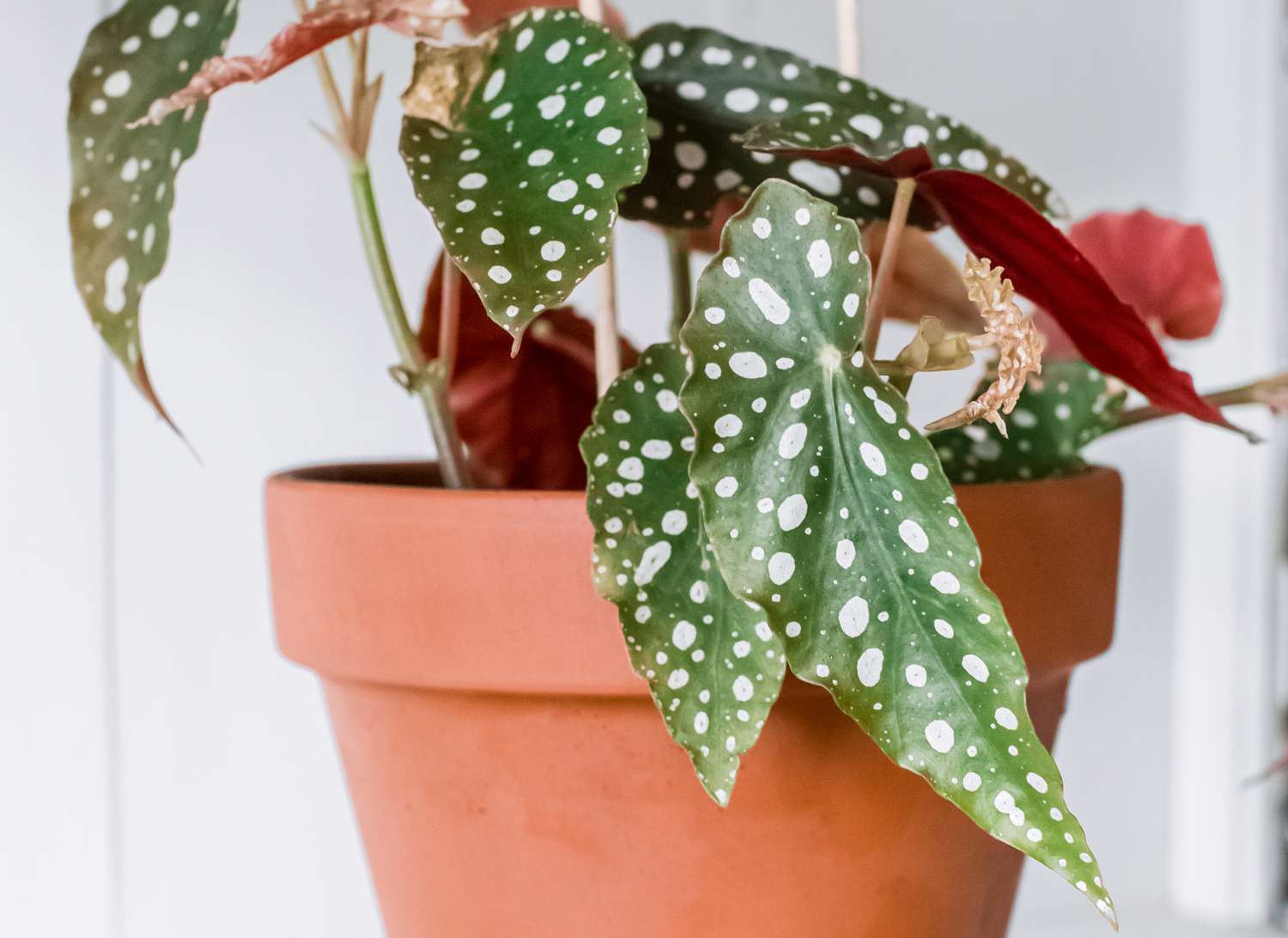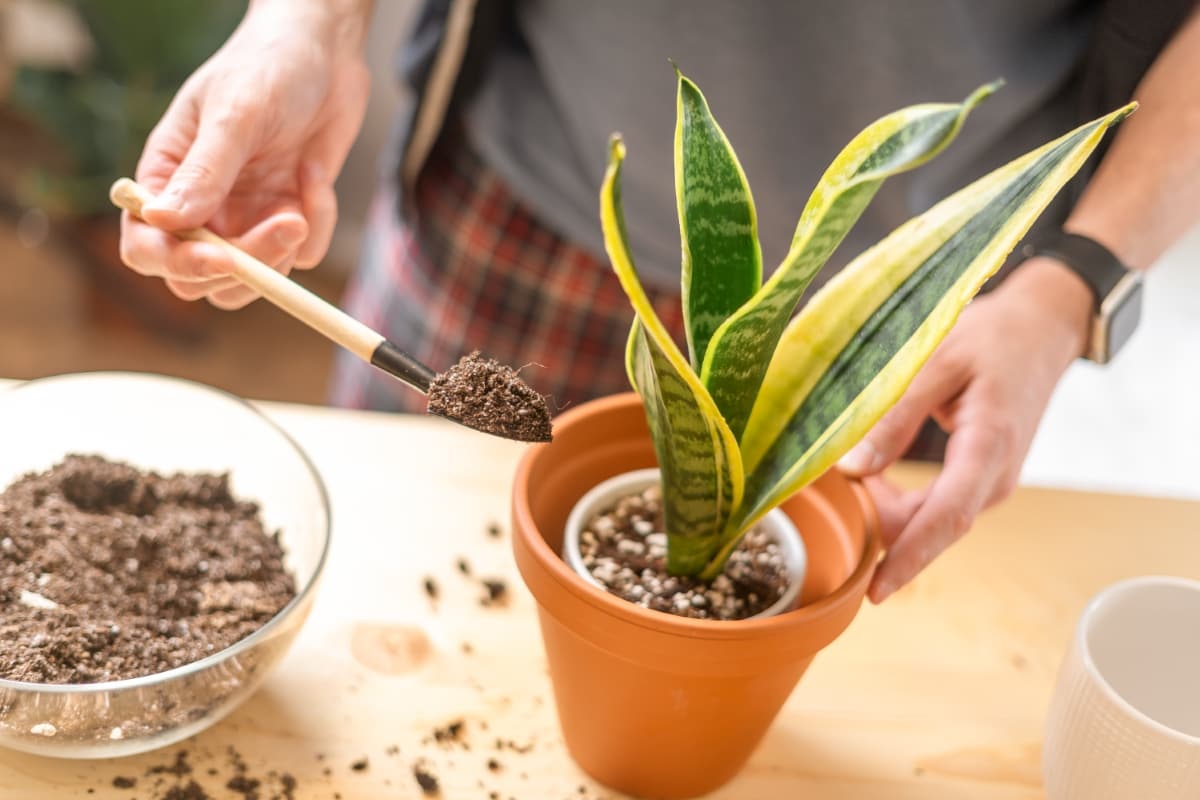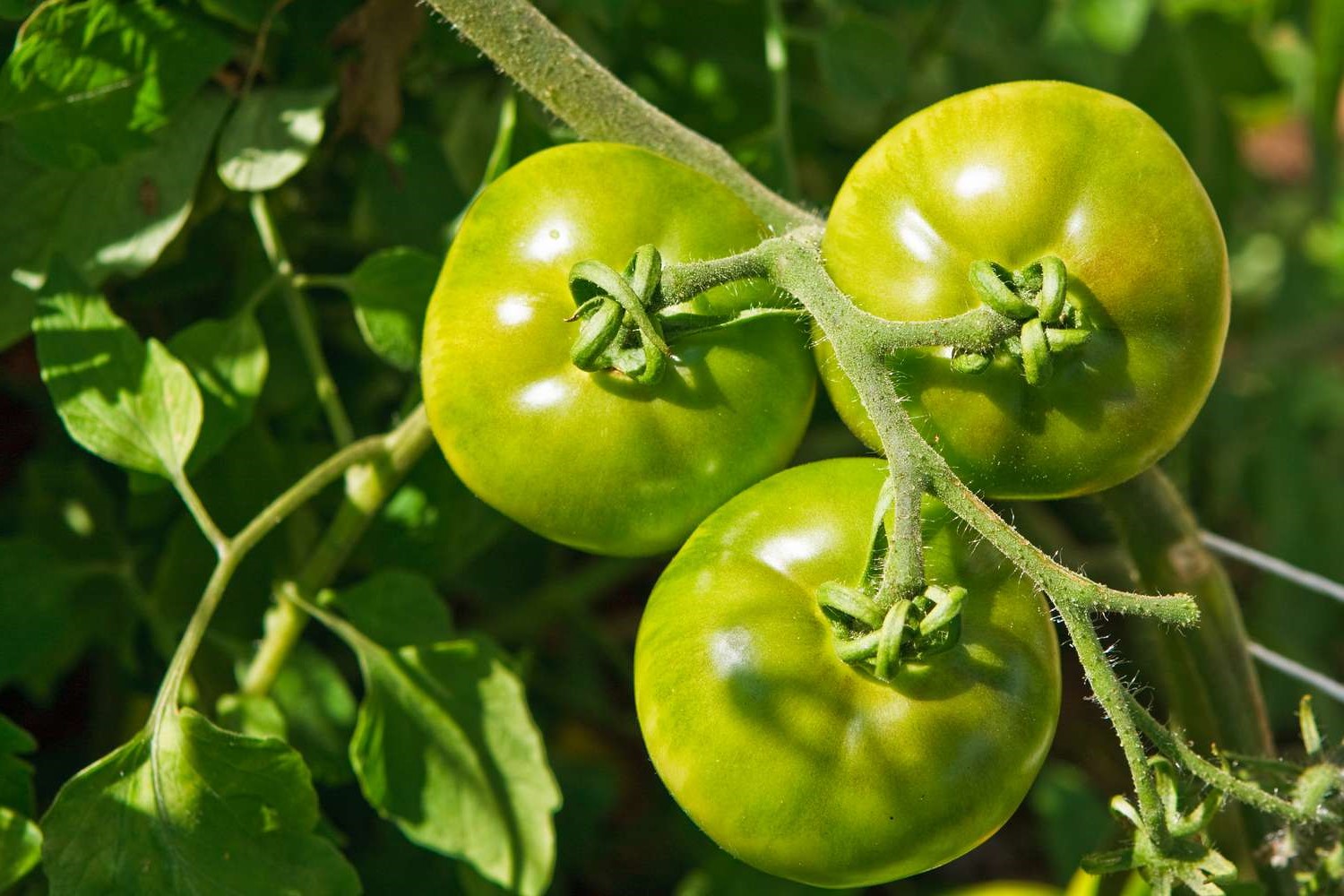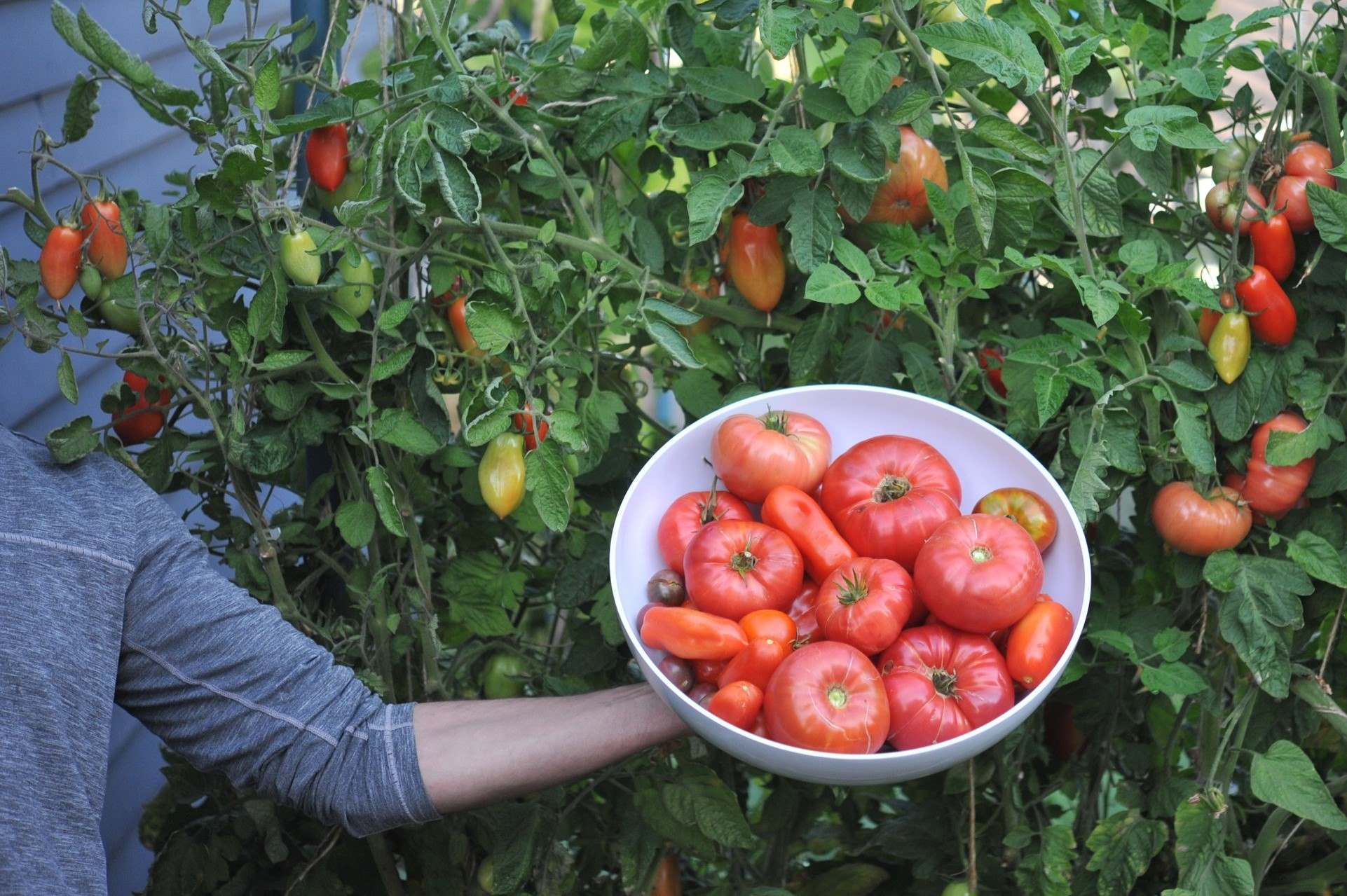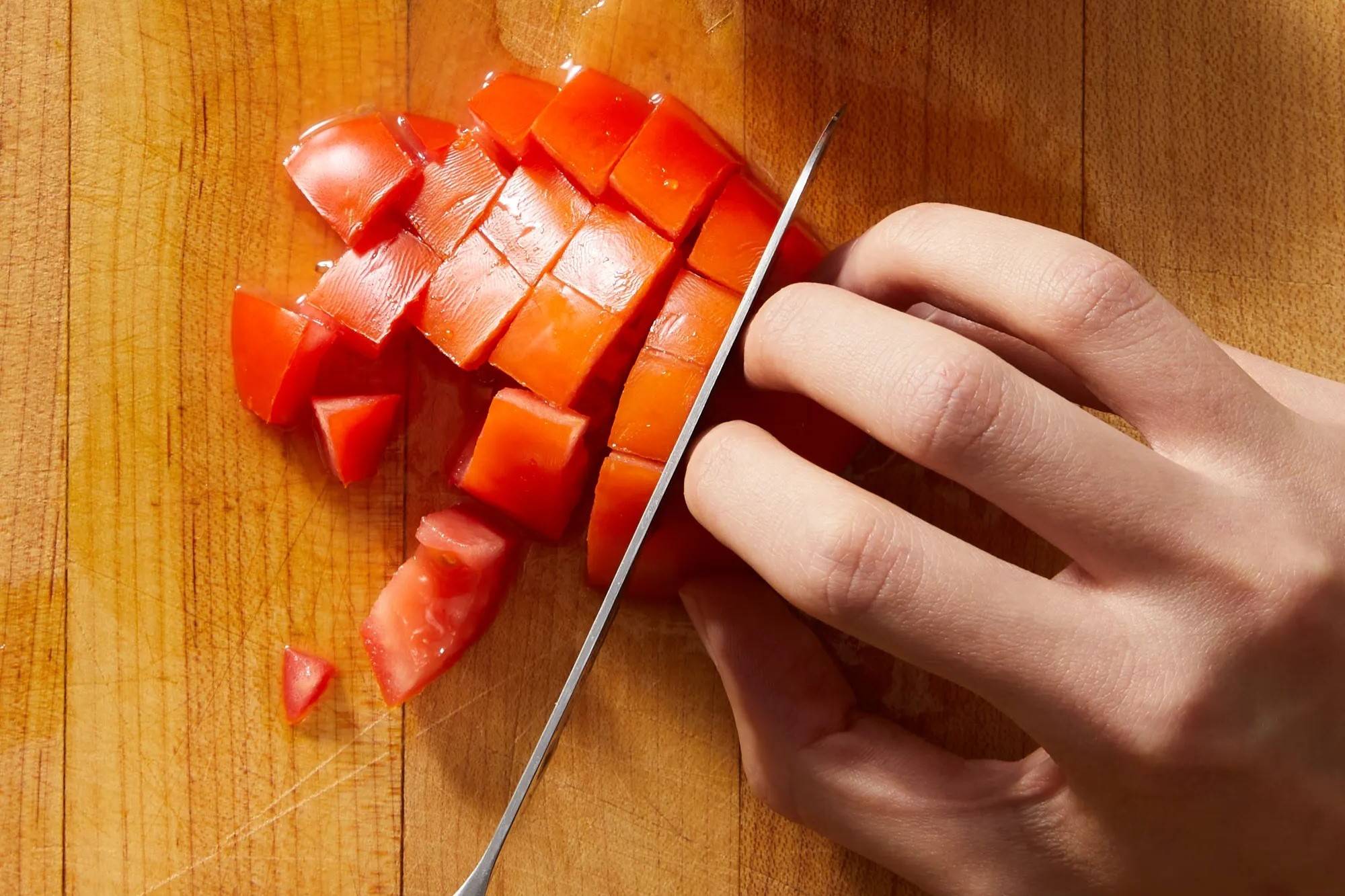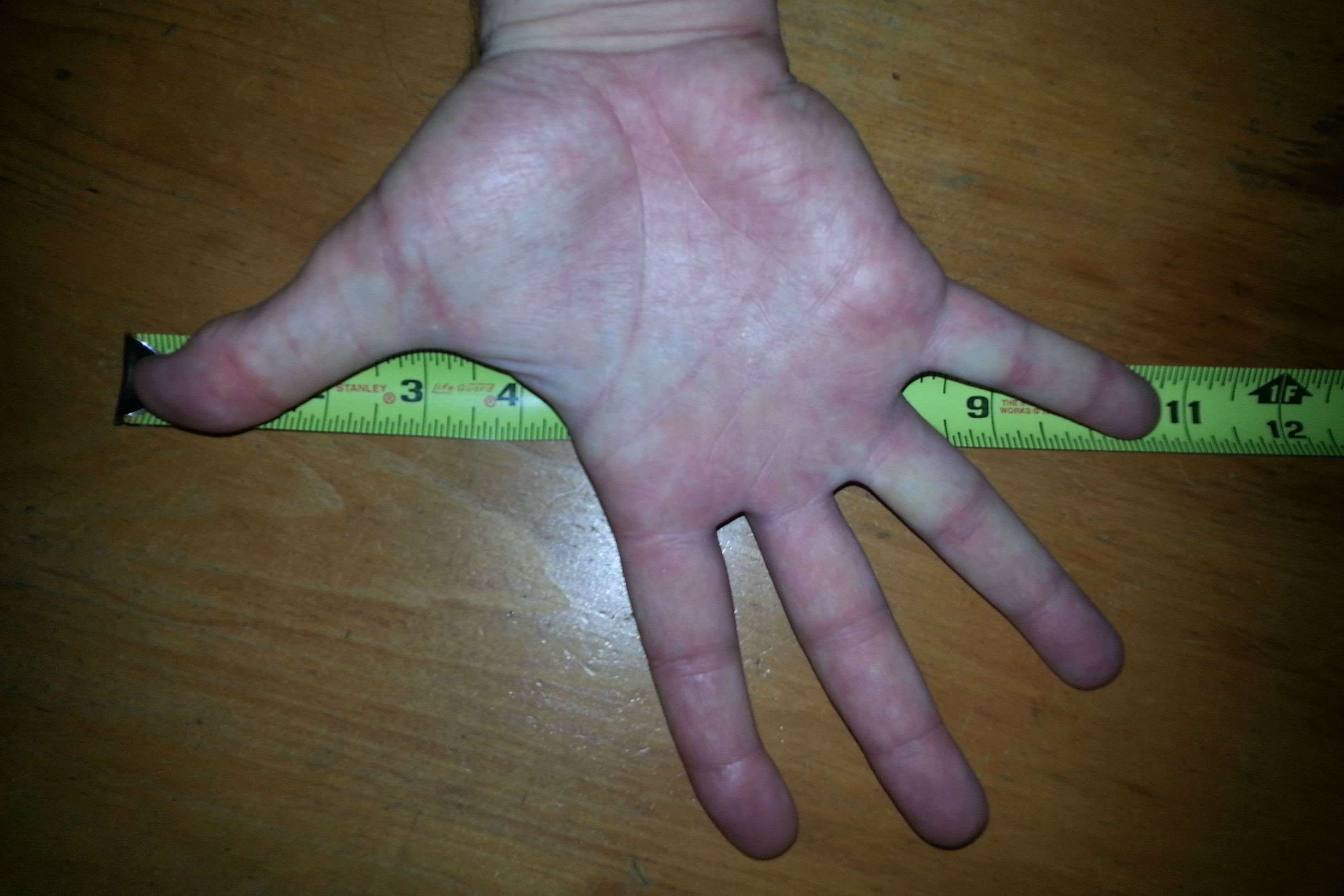Home>Food and Cooking>The Ultimate Guide To Hand Pollinating Tomato Plants
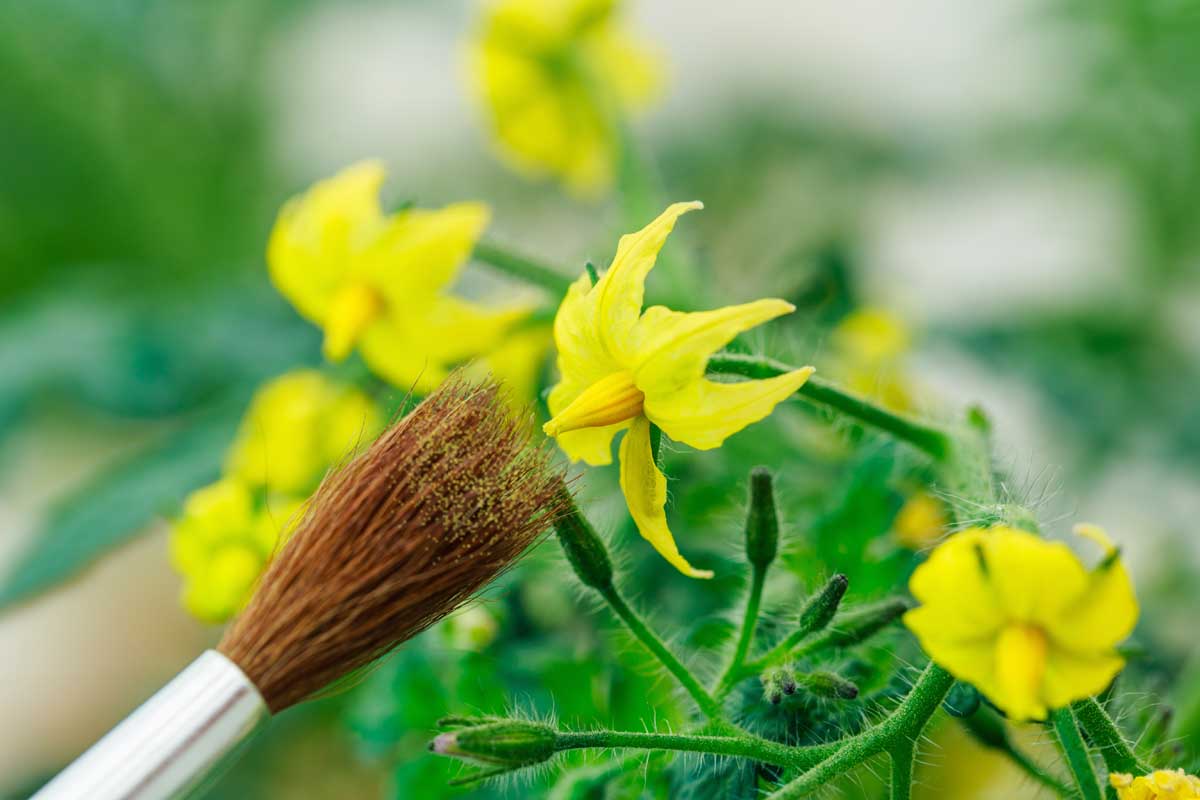

Food and Cooking
The Ultimate Guide To Hand Pollinating Tomato Plants
Published: January 27, 2024
Learn how to hand pollinate tomato plants with our comprehensive guide. Enhance your food and cooking experience with expert tips and techniques.
(Many of the links in this article redirect to a specific reviewed product. Your purchase of these products through affiliate links helps to generate commission for Noodls.com, at no extra cost. Learn more)
Table of Contents
Introduction
Tomatoes are a beloved staple in gardens and kitchens worldwide. Their vibrant colors, juicy flesh, and versatility make them a favorite among home gardeners and professional farmers alike. However, despite their popularity, growing healthy and abundant tomato plants can sometimes be a challenge. One of the key factors in successfully cultivating tomatoes is ensuring proper pollination, which directly impacts fruit development.
In nature, tomato plants rely on the wind and pollinators such as bees to transfer pollen from the male reproductive organs (anthers) to the female reproductive organs (stigma) within the same flower. This process leads to the formation of fruits. However, various environmental factors, such as excessive rain or high temperatures, can hinder natural pollination, resulting in poor fruit set and yield.
To address this issue, many gardeners turn to hand pollination as a reliable method to ensure the successful development of tomato fruits. Hand pollination involves manually transferring pollen from the male flower parts to the female flower parts, effectively mimicking the natural pollination process. By taking an active role in pollination, gardeners can significantly increase their chances of a bountiful tomato harvest.
In this comprehensive guide, we will delve into the art of hand pollinating tomato plants, exploring the reasons for choosing this method, the optimal timing for hand pollination, step-by-step instructions for the process, valuable tips and tricks for success, and common mistakes to avoid. Whether you are a seasoned gardener seeking to boost your tomato yield or a novice enthusiast eager to learn the ropes, this guide will equip you with the knowledge and confidence to master the art of hand pollination and elevate your tomato-growing endeavors.
Why Hand Pollinate Tomato Plants?
Hand pollination of tomato plants offers several compelling advantages for gardeners and farmers. Understanding the reasons behind choosing this method can shed light on its significance and potential benefits.
-
Maximizing Fruit Set: In certain conditions, such as high humidity or excessive rain, natural pollination may be impeded. Additionally, some tomato varieties may exhibit poor pollination due to genetic factors. Hand pollination allows growers to take control of the process, ensuring that a higher percentage of flowers successfully set fruit.
-
Enhancing Yield: By actively participating in the pollination process, gardeners can increase the overall yield of their tomato plants. Hand pollination helps mitigate the risk of low fruit set, ultimately leading to a more abundant harvest.
-
Overcoming Environmental Challenges: Unfavorable weather conditions, including high winds or extended periods of rain, can disrupt natural pollination. Hand pollination provides a reliable solution, allowing growers to work around these challenges and maintain consistent fruit production.
-
Managing Pollinator Scarcity: In some regions, the availability of natural pollinators, such as bees, may be limited. Hand pollination serves as an effective alternative, ensuring that every flower receives the necessary pollen for fruit development.
-
Preserving Genetic Purity: For growers who are saving seeds or cultivating hybrid varieties, hand pollination offers greater control over the breeding process. This method helps prevent unintended cross-pollination, preserving the genetic integrity of specific tomato cultivars.
-
Cultivating Unique Varieties: Hand pollination enables growers to experiment with controlled cross-breeding, leading to the development of new and distinct tomato varieties. This creative aspect of hand pollination appeals to enthusiasts interested in expanding the diversity of tomato cultivars.
By understanding the compelling reasons to hand pollinate tomato plants, gardeners can harness the potential of this method to overcome challenges, optimize fruit set, and ultimately elevate the quality and quantity of their tomato harvest.
This approach empowers growers to take an active role in the pollination process, fostering a deeper connection to the growth and development of their tomato plants.
When to Hand Pollinate Tomato Plants
Determining the ideal timing for hand pollinating tomato plants is crucial for maximizing the effectiveness of this method. It is essential to recognize the specific stages of flower development when intervention is most beneficial. The following insights will guide growers in identifying the opportune moments for hand pollination:
Flowering Stage:
Hand pollination should be initiated when the tomato plants enter the flowering stage. At this point, the plants begin producing delicate, vibrant flowers that serve as the precursors to fruit formation. It is important to monitor the emergence of these flowers, as they signify the readiness for pollination.
Mid-Morning to Early Afternoon:
The timing of hand pollination within the day is a critical factor for success. Optimal pollination conditions are typically observed during mid-morning to early afternoon when the flowers are fully open and the pollen is ripe. Choosing this timeframe ensures that the pollen is viable and readily available for transfer.
Weather Conditions:
Monitoring weather conditions is essential when determining the appropriate timing for hand pollination. Ideally, select a day with mild temperatures and minimal wind to facilitate the process. Extreme heat or heavy rain can hinder successful pollination, so it is advisable to wait for favorable weather conditions before proceeding with hand pollination.
Flower Maturity:
To identify the most suitable flowers for hand pollination, look for those that have fully opened and exhibit vibrant, healthy petals. Additionally, inspect the flower's reproductive organs to ensure that the stigma is receptive and ready to receive pollen. Choosing flowers at the peak of their maturity enhances the likelihood of successful pollination.
Continuous Monitoring:
Continuous monitoring of the tomato plants' flowering progress is essential for determining the ongoing need for hand pollination. As new flowers continue to emerge, growers should remain attentive and intervene as needed to ensure consistent fruit set and development.
By adhering to these guidelines and closely observing the tomato plants' flowering patterns, growers can effectively pinpoint the optimal moments for hand pollination. This strategic approach maximizes the chances of successful pollination and sets the stage for a prolific tomato harvest.
How to Hand Pollinate Tomato Plants
Hand pollinating tomato plants involves a series of precise steps designed to mimic the natural pollination process and ensure the successful development of fruit. By following these steps diligently, growers can effectively transfer pollen from the male flower parts to the female flower parts, thereby promoting robust fruit set and yield. The following detailed instructions outline the process of hand pollinating tomato plants:
-
Identify Male and Female Flowers: Begin by identifying the distinct characteristics of male and female tomato flowers. Male flowers typically feature a slender stem and a prominent stamen, while female flowers can be recognized by the presence of a small, immature fruit at the base, known as the ovary.
-
Prepare for Pollination: Select a male flower and gently remove its petals to expose the stamen, which holds the pollen. Take care to avoid damaging the delicate reproductive structures during this process. Similarly, identify a receptive female flower with a developed stigma, the receptive surface for receiving pollen.
-
Transfer Pollen: With a steady hand, carefully transfer the pollen from the stamen of the male flower to the stigma of the female flower. Gently brush the stamen against the stigma, ensuring that an ample amount of pollen is deposited. This crucial step facilitates the fertilization process necessary for fruit formation.
-
Repeat the Process: As tomato plants produce numerous flowers, continue the hand pollination process for additional flowers to maximize fruit set. Repeat the meticulous transfer of pollen from the male to the female flowers, ensuring thorough coverage across the plant's blossoms.
-
Monitor Progress: After hand pollination, monitor the flowers closely for signs of successful pollination. Over time, the fertilized flowers will begin to develop into young fruits, indicating the effectiveness of the hand pollination process.
By adhering to these detailed steps, gardeners can effectively hand pollinate their tomato plants, fostering optimal fruit development and a bountiful harvest. This hands-on approach to pollination empowers growers to actively contribute to the reproductive success of their tomato plants, ensuring the realization of their full fruit-bearing potential.
Read more: The Ultimate Guide To Vegetable Companion Planting: What To Plant Together And What To Avoid
Tips and Tricks for Successful Hand Pollination
Achieving successful hand pollination of tomato plants requires attention to detail and a nuanced understanding of the plant's reproductive process. To optimize the effectiveness of this method, consider the following tips and tricks:
-
Timing is Key: Plan hand pollination during the mid-morning to early afternoon when the flowers are fully open and the pollen is most viable. This ensures that the transfer of pollen is conducted at the optimal stage of flower development.
-
Gentle Handling: When preparing for pollination, handle the flowers with utmost care to avoid damaging the delicate reproductive organs. Gentle removal of the petals from the male flower and precise pollen transfer to the stigma of the female flower is essential for successful pollination.
-
Rotate and Tap: To enhance pollen distribution, gently rotate the male flower's stamen against the stigma of the female flower. Additionally, lightly tapping the flowers can dislodge excess pollen, increasing the chances of successful fertilization.
-
Utilize a Soft Brush: In cases where delicate handling is challenging, using a soft, fine brush, such as a small paintbrush, can aid in transferring pollen effectively. This method is particularly useful for ensuring precise pollen deposition without causing damage to the flowers.
-
Observe Weather Patterns: Take note of weather forecasts and select a day with mild temperatures and minimal wind for hand pollination. Calm weather conditions provide an optimal environment for successful pollen transfer and fertilization.
-
Consistent Monitoring: Continuously monitor the progress of the hand-pollinated flowers to track the development of young fruits. This ongoing observation allows growers to assess the effectiveness of their hand pollination efforts and make adjustments as necessary.
-
Maintain Plant Health: Prioritize the overall health and vigor of the tomato plants, as strong, healthy plants are more likely to produce abundant and high-quality flowers, enhancing the potential for successful hand pollination.
-
Consider Cross-Pollination: For growers interested in experimenting with cross-breeding, carefully select and label parent plants to facilitate controlled pollination. This approach enables the development of unique tomato varieties through deliberate cross-breeding efforts.
By incorporating these tips and tricks into the hand pollination process, growers can significantly increase the chances of successful fertilization and fruit set in their tomato plants. This proactive approach to pollination empowers individuals to actively contribute to the reproductive success of their plants, ultimately leading to a rewarding and fruitful harvest.
Common Mistakes to Avoid
Avoiding common mistakes in hand pollinating tomato plants is essential for maximizing the success of this method and ensuring optimal fruit development. By recognizing and addressing potential pitfalls, growers can elevate their pollination efforts and enhance the overall yield of their tomato plants. The following are crucial mistakes to steer clear of when engaging in hand pollination:
1. Premature Pollination:
Initiating hand pollination on immature flowers can hinder the success of the process. It is vital to wait until the flowers have fully opened and are at the peak of their maturity before conducting hand pollination. Premature pollination may result in ineffective fertilization and reduced fruit set.
2. Rough Handling of Flowers:
Handling the delicate tomato flowers with excessive force can lead to damage to the reproductive structures, compromising the pollination process. Careless removal of petals from the male flowers or imprecise pollen transfer to the female flowers can impede successful fertilization. Gentle and precise handling is crucial for ensuring the viability of hand pollination.
3. Inadequate Pollen Transfer:
Insufficient pollen transfer between the male and female flowers can impede the fertilization process, resulting in poor fruit set. It is essential to ensure thorough and effective pollen deposition on the stigma of the female flowers. Inadequate pollen transfer may lead to underdeveloped or malformed fruits.
4. Neglecting Weather Conditions:
Overlooking the influence of weather conditions on hand pollination can diminish its effectiveness. Conducting hand pollination during unfavorable weather, such as high winds or extreme heat, can disrupt the process and reduce the chances of successful fertilization. Monitoring and selecting optimal weather conditions are crucial for successful hand pollination.
5. Lack of Consistent Monitoring:
Failing to monitor the progress of hand-pollinated flowers can result in missed opportunities to address any issues that may arise. Continuous observation allows growers to assess the success of their hand pollination efforts and make necessary adjustments to maximize fruit set. Consistent monitoring is essential for ensuring the overall effectiveness of hand pollination.
6. Ignoring Plant Health:
Neglecting the overall health and vigor of the tomato plants can undermine the success of hand pollination. Weak or stressed plants may produce fewer and lower-quality flowers, impacting the potential for successful fruit development. Prioritizing plant health through proper care and maintenance is crucial for maximizing the effectiveness of hand pollination.
By avoiding these common mistakes and adhering to best practices, growers can significantly enhance the success of hand pollinating their tomato plants, leading to a more abundant and fruitful harvest.
Conclusion
In conclusion, mastering the art of hand pollinating tomato plants empowers growers to take an active role in ensuring the successful development of fruits, ultimately leading to a bountiful harvest. By understanding the reasons for choosing hand pollination, identifying the optimal timing, and following meticulous steps, gardeners can overcome environmental challenges, maximize fruit set, and enhance the overall yield of their tomato plants.
The decision to hand pollinate tomatoes offers a range of benefits, including the ability to overcome natural pollination limitations, manage pollinator scarcity, and preserve genetic purity. Additionally, this method presents an opportunity for growers to experiment with controlled cross-breeding and cultivate unique tomato varieties, adding an element of creativity to the gardening process.
By carefully timing the hand pollination process during the mid-morning to early afternoon, paying close attention to flower maturity, and selecting favorable weather conditions, growers can optimize the chances of successful pollination. The gentle and precise handling of flowers, coupled with thorough pollen transfer, is essential for achieving effective fertilization and robust fruit set.
Incorporating valuable tips and tricks, such as utilizing soft brushes, consistent monitoring, and maintaining plant health, further enhances the success of hand pollination. By avoiding common mistakes, including premature pollination, rough handling of flowers, and neglecting weather conditions, growers can elevate their pollination efforts and maximize fruit development.
Ultimately, the art of hand pollinating tomato plants embodies a harmonious partnership between growers and their plants, allowing for a deeper connection to the growth and development of these beloved garden staples. Through deliberate and attentive intervention, gardeners can witness the transformation of delicate flowers into vibrant, bountiful fruits, reaping the rewards of their dedicated efforts.
As gardeners embrace the art and science of hand pollination, they contribute to the preservation and proliferation of diverse tomato varieties, enriching the world of horticulture. This hands-on approach to pollination not only ensures the fulfillment of a successful harvest but also fosters a profound appreciation for the intricate processes that sustain the natural world.
In essence, hand pollinating tomato plants transcends the act of cultivation, encapsulating the spirit of stewardship and nurturing that defines the bond between growers and their gardens. It is a testament to the profound impact of human intervention in shaping the abundance and diversity of nature, reaffirming the timeless connection between mankind and the bountiful gifts of the earth.

